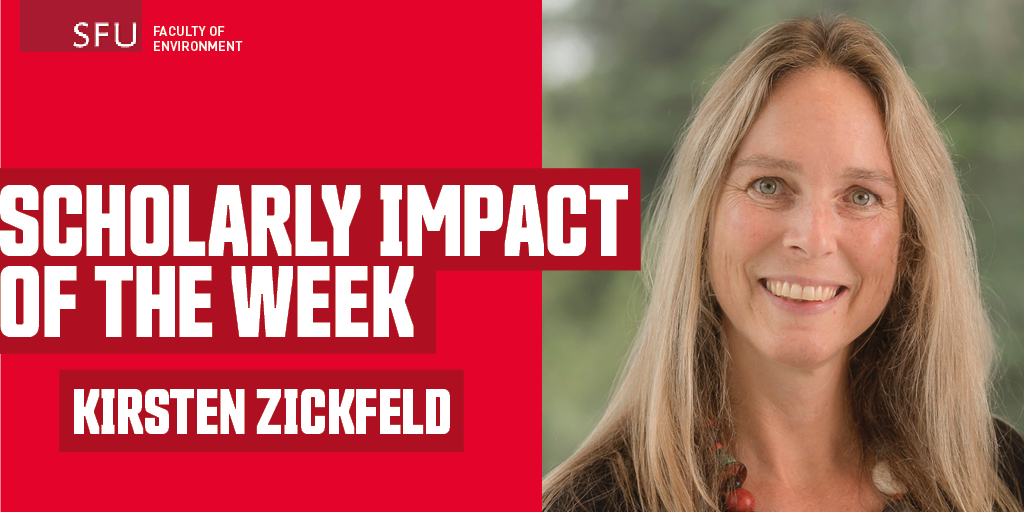
Countries, companies and institutions have set “net zero” targets as part of their efforts to keep global warming within the limits (of below 2 degrees Celsius) set by the Paris Agreement. Net zero means residual greenhouse emissions that are challenging to eliminate are balanced by the removal of carbon dioxide (CO2) from the atmosphere.
This can be done by enhancing the natural carbon “sinks” that absorb CO2, such as planting trees and restoring peatlands and mangrove forests. Other ways to remove CO2 include using bioenergy plants or engineered methods that capture CO2 directly from the atmosphere and store it underground or in products.
It is commonly assumed that "one ton of CO2 in equals one ton of CO2 out,” that is, the climate effects of CO2 emissions and removals are “symmetric.” However, this idea has never been tested.
Using a global climate model, SFU Distinguished Professor of climate science Kirsten Zickfeld and collaborators have shown that this assumption is not always correct: a CO2 emission into the atmosphere is more effective at raising atmospheric CO2 than an equivalent CO2 removal is at lowering it.
Zickfeld’s article, Asymmetry in the climate–carbon cycle response to positive and negative CO2 emissions outlines her findings. She has also published a blog post discussing the implications of her research for Carbon Brief.
One of the reasons that large scale CO2 emissions and removals would not be symmetrical is explained by the non-linear nature of Earth’s systems. Plants may be able to thrive and absorb CO2 under increased atmospheric CO2, but at higher levels of CO2 concentration this effect diminishes. The ocean is similar – its ability to absorb CO2 diminishes at higher levels of CO2 concentration.
“Our study implies that balancing CO2 emissions into the atmosphere with CO2 removals of the same magnitude could result in a different climate outcome than avoiding the CO2 emissions in the first place,” says Zickfeld.
While it also suggests a larger amount of CO2 removal is required to compensate for a given amount of CO2 emissions, Zickfeld recommends further study is needed to learn more about the extent of this effect.
SFU's Scholarly Impact of the Week series does not reflect the opinions or viewpoints of the university, but those of the scholars. The timing of articles in the series is chosen weeks or months in advance, based on a published set of criteria. Any correspondence with university or world events at the time of publication is purely coincidental.
For more information, please see SFU's Code of Faculty Ethics and Responsibilities and the statement on academic freedom.